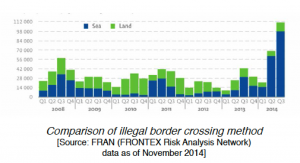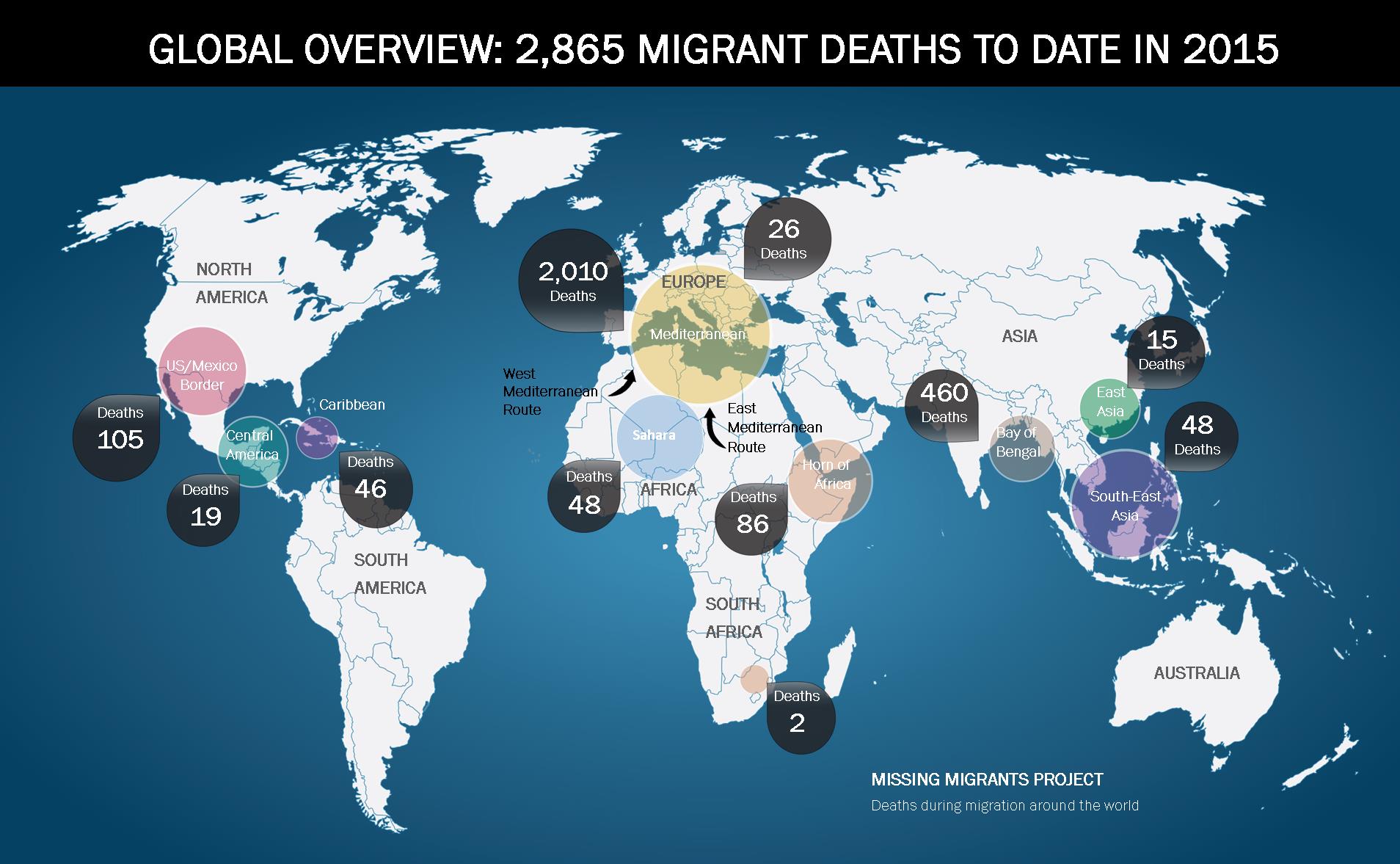The Arab Spring and its aftermath have provoked significant regional unrest from which emerged political regime changes in many countries of North Africa and the Middle East. In Syria and Libya, notably, unrest has led to devastating civil wars forcing a large part of their population to attempt to reach European grounds seeking refuge and better living conditions.
The European Union (EU) faces security and humanitarian challenges of unprecedented proportions due to the huge migratory wave across the central and eastern Mediterranean.
As Malta’s Prime Minister stated in April, “What is happening now is of epic proportions. If Europe, if the global community continues to turn a blind eye… we will all be judged in the same way that history has judged Europe when it turned a blind eye to the genocide of this century and last century.”
By Maria Kottari
Amid ongoing migrant arrivals, and considerations by the EU of more direct action, this article outlines the conditions of trafficking across the Mediterranean Sea and the attendant security and humanitarian implications for the EU.
The article focuses on the case of illegal migration towards Greek shores and the internal policy challenges the country faces given its ongoing economic crisis.
An assessment of FRONTEX’s maritime operations in the eastern Mediterranean is made, along with an analysis of Turkey’s role and the EU’s strategy in the areas of maritime and migration policy.
Overview
The commemoration of the tragic shipwreck of the Titanic some 103 years earlier took place on 16 April 2015.
A comparison made by Amnesty International shows that in 2014 migrant drownings in the Mediterranean made up more than the equivalent of two Titanics in terms of numbers of victims.
According to the United Nations High Commissioner for Refugees (UNHCR) some 3,400- 3,500 migrants, refugees and asylum-seekers bound for European shores lost their lives crossing the Mediterranean in 2014. This number is expected to rise in 2015. On 18 April 2015, 800 migrants drowned off the Libyan coast and a similar event took place in the beginning of the same month with 400 victims.
According to the Greek authorities, during the weekend of 18 and 19 April the Greek coastguard rescued 1,047 migrants at risk. Amnesty International reports that the escalating conflicts in Africa and the Middle East have “led to the largest refugee disaster since the Second World War.”
Amnesty estimates that 57 million people have been forced to flee worldwide in the last year, 6 million more than in 2012.
As shown in Figure 1 (below), for the last two years illegal border crossings via seaways have surpassed illegal land border crossings.
Migrants, refugees and asylum-seekers from North Africa and the Middle East, mainly from Libya, Syria and Somalia, are crossing the Mediterranean in droves, aided by human traffickers, seeking better living conditions in EU territory.
Smugglers take full advantage of migrants’ desperation, trying to squeeze their last cent from them.






